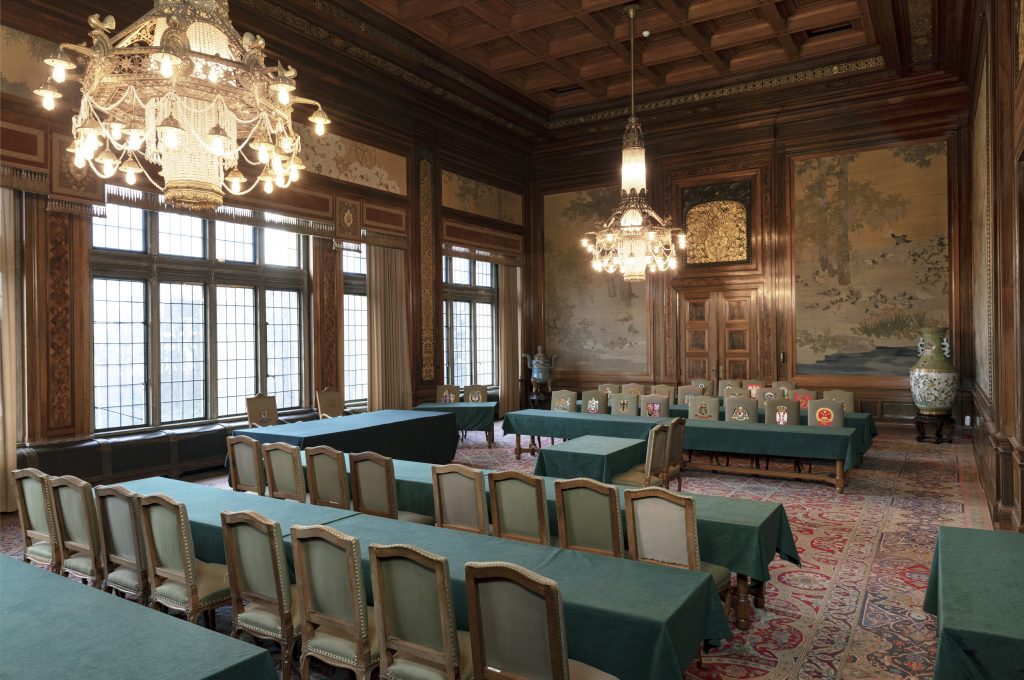30-04-2021
In the spring of 2021, the Carnegie Foundation organized a multi-day conference focused on the restoration of the Japanese Room, specifically the Japanese wall tapestries. Experts from around the world attended the conference, which had to be held online due to Covid-19 measures, to share expertise and prepare for the restoration of these special objects.

Photo by Margareta Svensson
The Japanese Room
The Japanese Room was named after nine precious silk tapestries that adorn the walls of the room and were donated by the Japanese government. In 1909, Japan contracted the imperial firm of Kawashima Jimbei in Kyoto to manufacture the finest wall tapestries in the world with a theme of flowers and birds. These wall tapestries were woven in the tradition of the ‘Tsuzure Nishiki’ technique. This technique is one of the most refined, complex, and rarest weaving techniques in the world. More information about the Japanese Room can be found here.
Preservation of the wall tapestries
Parts of the tapestries were last restored in the 1980s. Over the past several decades, the Carnegie Foundation, owner and manager of the building, has raised questions about the current condition and future conservation of these special Japanese tapestries. It was considered important to seek the advice of international experts in order to answer principal questions and discuss challenges with regard to the conservation.
Apart from the issues regarding the conservation of these particular objects, the foundation also has to consider in which way restoration decisions for the tapestries will influence the balance and harmony of the interior ensemble of the room as well as the daily use of the room. Since the opening of the Peace Palace, the ensemble has never changed. At the same time, the Peace Palace is not a museum environment. The room was designed and is still used as a meeting room for the Permanent Court of Arbitration.
Conference
On 8, 9, 15, and 19 April 2021, the Carnegie Foundation organized four in-depth online sessions with a committee of international experts and stakeholders with the objective to seek advice on how best to restore and preserve the tapestries while continuing to display the best of Japanese craftsmanship. The committee included Japanese and European experts on Japanese textiles and wall tapestries as well as representatives from Kawashima Selkon Textiles Company Ltd., the manufacturer of the original wall tapestries. It was an intense four days of discussing challenges, sharing expertise, and identifying paths for the future. All contributions were translated directly by simultaneous translators so that a lively and detailed exchange could take place. The results of this conference have been summarized and carefully elaborated over the last few weeks. These reports will be used as a guideline for conservators that will perform the restoration works.
This conference was made possible through the effort of Dr Bill Wei of the National Heritage Agency and was financially supported by Stichting Zabawas.